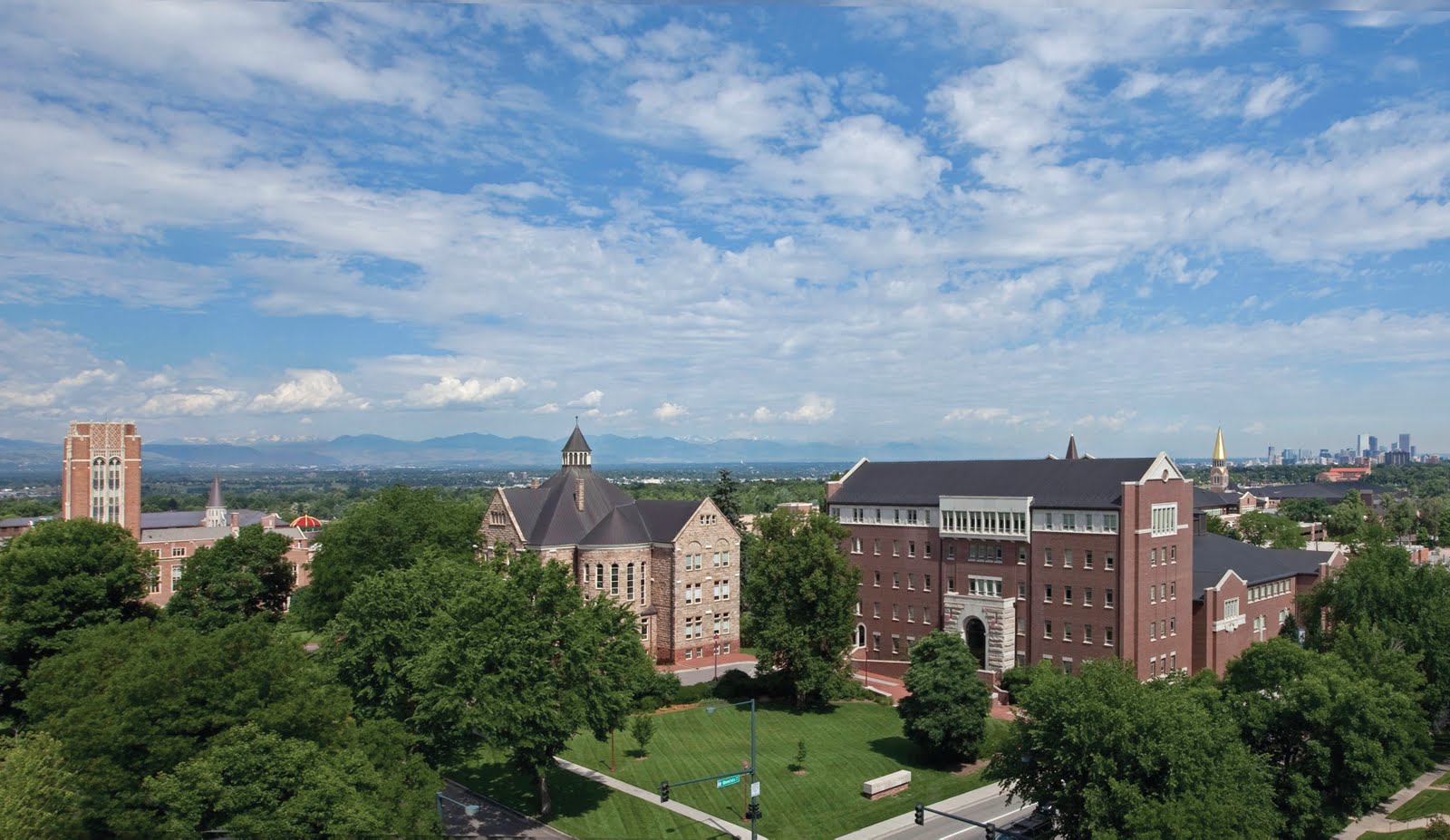Eight university-owned homes will be demolished in the coming weeks as part of DU’s turf and green space project, which will result in two new recreational fields in the area between CIBER Field and South High Street.
Demolition of the homes, located on the east side of South High Street between East Asbury Avenue and East Jewell Avenue, is likely to begin within the next three weeks, according to Allan Wilson, DU’s assistant director of facilities management. The project will also replace the existing grass practice field, located parallel to CIBER Field.
“We own a lot of property on the perimeter of campus, and we have been acquiring property on that block for probably 40 years,” said Wilson. “We finished the last acquisition about a year ago. We knew we were coming up on a construction project, so we set the lease terms with that in mind. It was probably in January or February that our funding was put together, which allowed us to move forward.”
The houses were predominantly built during the 1920s, housing university faculty members, and had since undergone numerous resales before being acquired by DU. The university leased all eight properties on short-term agreements until roughly January of this year, at which point tenants were notified of the project. The renters have all been relocated, with the majority transitioning to other university-owned properties.
“The variable factor was that, while the project had been planned for some time, there was no solid timeline for when funding would be complete, so it was impossible to have lease expiration dates coincide perfectly with the project start date,” Wilson said.
“Therefore, it was not a seamless transition, but I believe that it was well managed. We worked with tenants to facilitate their moving prior to their lease expiration date by providing rent abatement and relocation assistance.”
The turf project has been a part of the “master plan” for the Ritchie Center complex since early 2000, according to Wilson. However, when the Ritchie Center was built in 1999, the university agreed to expansion restrictions with the surrounding neighborhood.
“There was an agreement with the neighborhood that, after the Ritchie Center was built, we couldn’t expand until after a time period,” said Stuart Halsall, the assistant vice chancellor for recreation, athletic events and Ritchie Center operations. “That time period has elapsed, so we now have the opportunity. The remainder was contingent on fundraising, because the project is being funded through private gifts with support of the university.”
Working with a budget of $3.5 million, the university is currently in the process of receiving contractor bids. Once that has been finalized, a more concrete schedule will be established for the 18-week project. In the meantime, Halsall pinned down mid-autumn as a hopeful completion date for the project, with the bulk of construction occurring this summer.
CIBER Field, with its north-south orientation, will remain unchanged throughout this project. Directly west of the field, however, two new synthetic turf fields will be constructed perpendicular to CIBER Field, extending toward South High Street. Both fields will be lit and will be available for use by varsity, club and intramural athletic teams, as well as the general student population.
The expansion of green space on campus is becoming increasingly necessary, according to Halsall, as the number of athletic teams continues to increase at all levels. In the last year, the number of intramural participants has increased from 1,100 to more than 1,300, and nearly 100 new students have joined club sports teams, according to Scott Farina, the student programs manager.
“Since I first got here in 1999, our number of field sports, especially on the club sports side, has drastically grown,” said Halsall. “This will be a good opportunity to meet those needs and offer more opportunities for students. I think this is going to be a really positive contribution to the campus.”
With the addition of the new fields, Farina hopes to expand a number of the field sports offered at the intramural level, adding women’s leagues in sports previously restricted to men’s and co-recreational leagues and increasing the number of teams within each sport.
“We have 46 intramural soccer teams this spring, and that’s the most I’ve ever seen,” said Farina. “With the new fields, we’re hoping to expand to 60 teams next year, and we’re also hoping to double the number of ultimate Frisbee teams. The fields are really just allowing us to offer a lot more.”
In addition to allowing for the expansion of intramurals, the new fields will also greatly benefit several existing club sports, such as the men’s club soccer team. According to club vice president Stephen Molinari, the team is allotted only one hour of practice time each week, beginning at 10 p.m. on Wednesday nights.
With the addition of the new turf fields, Molinari said he is looking forward not only to longer and better-timed practices, but also to the ability to host games throughout the week. This year, since the practice field is not lit and the lacrosse field does not have proper soccer lines, the team was forced to schedule all of its games on weekends during daylight hours, resulting in two or three games occurring in a single weekend and, consequently, severely exhausted athletes.
“Just about every guy on the team has mentioned that they would like to practice more often than this,” said Molinar. “The club has made great strides the last couple of seasons, and we anticipate that these new facilities will be a huge help moving forward. We are thrilled about the new fields.”











